Your cart is currently empty!
Month: July 2024
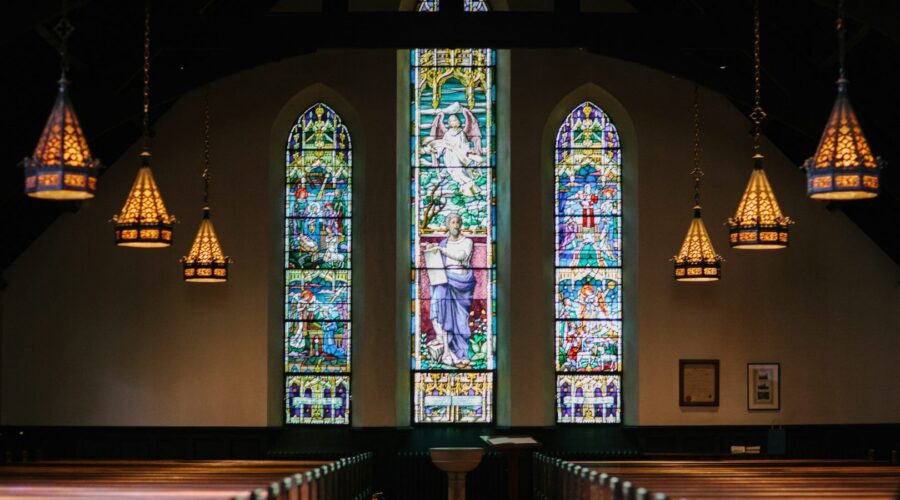
Discover Family Church: Nurturing Faith, Connecting Generations
Introduction
The family is the cornerstone of any society, and the church plays a vital role in shaping and supporting its members. A family church is a faith community where individuals of all ages come together to grow spiritually and build meaningful relationships.
Importance of Family Church
Nurturing Faith
- Provides a safe and loving environment for children to learn about God and Jesus.
- Encourages parents to model Christian values and pass on their faith to their children.
- Offers opportunities for families to worship and pray together, strengthening their spiritual bond.
Connecting Generations
- Brings together people of different ages, creating a multi-generational community.
- Fosters intergenerational relationships, fostering respect and understanding.
- Provides opportunities for grandparents, parents, and children to learn from and support each other.
Building Community
- Creates a sense of belonging and connection within the church.
- Provides support and encouragement for families during challenges.
- Encourages members to serve and reach out to the broader community.
Essential Elements of a Family Church
Family Worship
Regular worship services designed to engage and inspire people of all ages.
Children’s Ministry
Age-appropriate programs and activities that teach children about God and foster spiritual growth.
Youth Ministry
Programs that support teenagers in developing their faith and identity.
Parenting Support
Resources and support groups to help parents navigate the challenges and joys of raising children.
Grandparent Ministry
Programs that recognize and celebrate the role of grandparents in the family and church.
Benefits of Family Church
- Stronger family bonds
- Improved communication and relationships
- Increased faith and spirituality
- Enhanced community involvement
- Positive impact on children’s character development
Tips for Finding a Family Church
- Visit different churches and observe the worship services.
- Talk to the pastor and staff about their vision for the family.
- Inquire about the availability of children’s and youth programs.
- Consider the church’s demographics and whether it aligns with your family’s needs.
- Pray and seek God’s guidance in your decision.
Additional Resources
FamilyLife Ministries
Focus on the Family
Christianity Today: Family Ministries That Make a DifferenceConclusion
A family church is a treasure that nurtures spiritual growth, connects generations, and builds a supportive community. By embracing the essential elements of a family church, families can experience the transformative power of faith and build a strong foundation for the future.
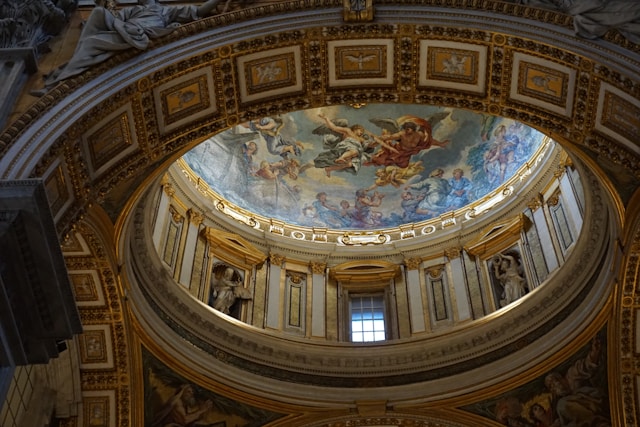
Discover the Extraordinary Lives of the Apostles: Pillars of Faith and Christianity
Introduction
The apostles, devout followers of Jesus Christ, played a pivotal role in spreading the message of Christianity throughout the world. Their unwavering faith, extraordinary experiences, and unwavering commitment have left an enduring legacy that continues to shape the beliefs and practices of millions today.
The Twelve Apostles
Selection and Significance
Jesus meticulously selected twelve apostles from his disciples to serve as his closest companions and emissaries. These men were ordinary individuals from various walks of life, including fishermen, tax collectors, and zealots. By choosing them, Jesus demonstrated his desire to establish a diverse and inclusive community.
Names and Roles
- Simon Peter: The rock on which Jesus would build his church, Peter was a bold and charismatic leader.
- Andrew: Peter’s brother and the first apostle called by Jesus.
- James (son of Zebedee): Known as “the Greater,” he was one of Jesus’s closest companions.
- John (son of Zebedee): Known as “the Beloved,” he was the youngest and had a special bond with Jesus.
- Philip: From Bethsaida, he brought Nathanael to Jesus.
- Bartholomew: Also known as Nathanael, he was known for his honesty.
- Matthew: A former tax collector, he left his profession to follow Jesus.
- Thomas: Known as “Doubting Thomas,” he needed to see the resurrected Jesus to believe.
- James (son of Alphaeus): Also known as “the Less,” he was a relative of Jesus.
- Thaddeus: Also known as Judas the son of James, he was often confused with Judas Iscariot.
- Simon the Zealot: A former member of the radical Zealot group, he became a devoted disciple.
- Judas Iscariot: The treasurer of the group, he betrayed Jesus for 30 silver coins.
Missions and Preaching
The apostles were entrusted with the task of spreading the gospel message to all nations. They embarked on perilous journeys, endured persecution, and faced countless challenges. Their unwavering faith and the power of the Holy Spirit enabled them to perform miracles, heal the sick, and cast out demons.
The Great Commission
Before his ascension into heaven, Jesus gave his disciples the Great Commission, a mandate to spread the gospel throughout the world and make disciples of all nations. This command became the driving force behind the apostles’ missionary work and established the foundation for the Christian Church.
Mattias: The Replacement for Judas
After Judas Iscariot’s betrayal and death, the apostles chose Mattias to replace him in their ranks. He was a faithful follower of Jesus and became an important figure in the early Church.
Other Apostles
Paul: The Apostle to the Gentiles
While not one of the original twelve, Paul (formerly known as Saul) played a crucial role in spreading Christianity. As the “Apostle to the Gentiles,” he reached out to non-Jewish populations and established numerous churches throughout the Roman Empire.
Mary Magdalene: A Female Disciple
Mary Magdalene was a devoted follower of Jesus and one of the first witnesses of his resurrection. She played an important role in the early Church, but her exact status as an apostle is still debated.
The Legacy of the Apostles
The legacy of the apostles continues to this day. Their writings, known as the Gospels and Epistles, form the core of the New Testament and provide essential teachings on Christian beliefs and practices. Their lives and sacrifices serve as an inspiration to countless believers worldwide.
Conclusion
The apostles were extraordinary individuals who played a pivotal role in the establishment and spread of Christianity. Their unwavering faith, courageous actions, and profound teachings have left an enduring legacy that continues to shape the lives of millions. As we reflect on their lives and sacrifices, we are reminded of the power of faith, the importance of spreading the gospel message, and the enduring impact that individuals can have on the world.

Show Your Holiday Spirit with the Meaningful Tradition of Shoebox Christmas
Introduction
The Shoebox Christmas tradition is a heartwarming way to spread joy and the spirit of the holiday season to those in need. By filling a shoebox with practical gifts and treats, you can make a tangible difference in the life of a child or family who may not have much to celebrate this Christmas.
What is Shoebox Christmas?
Shoebox Christmas is a charitable initiative that encourages individuals, families, and organizations to collect and assemble shoeboxes filled with essential items, toys, and Christmas treats for children and families in need. These shoeboxes are then distributed to local charities and organizations that work with underprivileged communities.
How to Participate in Shoebox Christmas
1. Choose a Shoebox
Start by selecting a medium or large-sized shoebox that is in good condition. Remove any labels or stickers and wrap the box with festive paper or fabric.
2. Fill with Practical Gifts
The primary focus of Shoebox Christmas is to provide essential items to those in need. Consider including the following:
- Toothbrush and toothpaste
- Soap and shampoo
- Comb or brush
- School supplies (pens, pencils, notebooks)
- Band-aids and basic first aid items
3. Add Toys and Treats
To make the shoebox more festive and enjoyable, include some age-appropriate toys and Christmas treats:
- Stuffed animals
- Action figures
- Dolls
- Books
- Candy canes
4. Personalize the Box
Add a handwritten note or draw a picture to make the gift more special and personal. You can also include a small photo of yourself or your family so the recipient knows who made their shoebox.
5. Wrap the Box
Securely wrap the filled shoebox with festive wrapping paper and add a ribbon or bow. Label the box with the age and gender of the intended recipient.
6. Drop-Off or Mail
Contact the local participating charity or organization to find out where to drop off your completed shoebox. You can also mail your box directly to the distribution center if specified.
Benefits of Participating in Shoebox Christmas
- Spread joy and make a tangible difference in the lives of underprivileged children and families.
- Teach children about the importance of giving and compassion.
- Foster a sense of community and holiday spirit.
- Encourage creativity and personalization through the gift-making process.
Tips for Shoebox Christmas
- Start early to give yourself ample time to gather and assemble the items.
- Consider the age and gender of the recipient when selecting items.
- Focus on practical and essential items rather than expensive toys.
- Personalize the box with a handwritten note or drawing.
- Spread the word and encourage others to participate.
Additional Resources
Conclusion
Shoebox Christmas is a heartwarming tradition that embodies the true spirit of the holiday season. By participating in this initiative, you can not only bring joy to those in need but also spread love, compassion, and hope throughout your community. Embrace the opportunity to make a meaningful difference this Christmas and fill a shoebox with items that will warm the hearts of those who receive them.

Explore the Heart of Community: A Comprehensive Guide to Local Churches
Introduction
A local church serves as a vibrant hub for spiritual growth, social connection, and community engagement. It’s a place where individuals gather to deepen their faith, forge meaningful relationships, and contribute to their local surroundings. Let’s delve into the diverse aspects of a local church and its significant role in shaping communities.
Spiritual Growth and Enrichment
Worship and Prayer
Local churches provide a sacred space for worship and prayer. Through inspiring sermons, heartfelt prayers, and uplifting music, attendees connect with a higher power and experience spiritual fulfillment.
Bible Study and Discipleship
Churches offer opportunities for Bible study, allowing individuals to deepen their understanding of scripture and its teachings. Discipleship programs foster spiritual growth and provide guidance for Christian living.
Social Connection and Community
Fellowship and Support
Local churches foster a sense of belonging and community. Social gatherings, group activities, and informal conversations create opportunities for individuals to connect with like-minded people and build lifelong friendships.
Care and Support
Churches provide support and care during times of need. Pastoral counseling, support groups, and prayer networks offer a lifeline to individuals facing life’s challenges.
Community Engagement and Outreach
Service and Volunteering
Local churches actively engage in their communities through volunteer programs and outreach initiatives. Members participate in food drives, community clean-ups, and mission trips, making a tangible difference in the lives of others.
Partnerships and Collaborations
Churches collaborate with non-profit organizations and local governments to address community needs. They may offer after-school programs, homeless shelters, or counseling services, working hand-in-hand with other agencies to improve the well-being of their surroundings.
Choosing a Local Church
Finding the Right Fit
Choosing a local church is a personal journey. Consider the denomination, worship style, and community involvement that best aligns with your beliefs and personality.
Visiting and Asking Questions
Visit prospective churches and observe the services. Engage with the pastor and members to gain insights into the church’s mission, values, and overall atmosphere.
Getting Involved
Once you’ve found a church you connect with, don’t hesitate to get involved. Attend regularly, participate in activities, and join a small group or ministry to fully experience the church’s offerings and contribute to its community.
Benefits of Attending a Local Church
Attending a local church offers numerous benefits for individuals and communities alike:
- Strengthened faith and spiritual guidance
- Meaningful relationships and social support
- Opportunities for learning and personal growth
- A sense of purpose and community belonging
- Contributions to community well-being through service and outreach
Table: Types of Local Churches
| Type | Characteristics |
|—|—|
| Denominational | Affiliated with a specific religious denomination (e.g., Catholic, Methodist, Baptist) |
| Non-Denominational | Independent of any denomination, emphasizing a personal relationship with Jesus Christ |
| Megachurch | Large churches with thousands of members, often offering a wide range of programs and activities |
| Microchurch | Small, informal gatherings focused on community and discipleship |Conclusion
A local church is more than just a building or an institution. It’s a vibrant and dynamic community of believers who gather to worship, grow spiritually, connect with others, and make a difference in their surroundings. By embracing the opportunities that a local church offers, individuals can enrich their lives, foster meaningful connections, and contribute to the well-being of their communities.
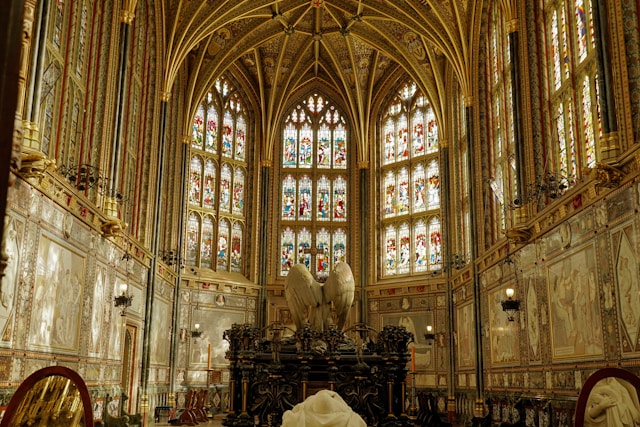
The Catholic Bible: A Comprehensive Guide to Versions
Introduction
The Catholic Bible is the sacred text of the Catholic Church. It is a collection of inspired writings that contain the Word of God. The Bible has been translated into hundreds of languages, and there are many different versions available. In this guide, we will discuss the different versions of the Catholic Bible, their history, and their features.
History of the Catholic Bible
The Catholic Bible is rooted in the Hebrew Bible, which was written over a period of centuries by Jewish authors. The New Testament was written in the first century AD by Christian authors. The Catholic Church has recognized the Bible as its sacred text since the early centuries of Christianity.
The first complete Latin translation of the Bible was the Vulgate, which was completed by Jerome in the 4th century AD. The Vulgate became the official Latin Bible of the Catholic Church and was used for centuries.
In the 16th century, the Protestant Reformation led to the development of new Bible translations in vernacular languages. These translations included the King James Version in English and the Luther Bible in German.
In response to the Protestant translations, the Catholic Church commissioned a new Latin translation of the Bible, which was completed in 1592. This translation, known as the Nova Vulgata, is still the official Latin Bible of the Catholic Church.
Different Versions of the Catholic Bible
There are many different versions of the Catholic Bible available today. These versions can be divided into two main categories: Latin Bibles and vernacular Bibles.
Latin Bibles
Latin Bibles are translations of the Bible into the Latin language. The most popular Latin Bible is the Nova Vulgata, which is the official Latin Bible of the Catholic Church. Other popular Latin Bibles include the Vulgate and the Clementine Vulgate.
Vernacular Bibles
Vernacular Bibles are translations of the Bible into the vernacular languages of the people. There are many different vernacular Bibles available, including the King James Version in English, the Luther Bible in German, and the Douay-Rheims Bible in English.
Features of the Catholic Bible
The Catholic Bible contains a number of features that are unique to the Catholic tradition. These features include:
- The Deuterocanonical Books: The Deuterocanonical Books are a group of books that are included in the Catholic Bible but are not included in the Protestant Bible. These books include Tobit, Judith, Esther, Maccabees 1 and 2, Wisdom, Sirach, and Baruch.
- The Apocrypha: The Apocrypha is a collection of books that are included in some Catholic Bibles but are not included in the Protestant Bible. These books include 1 Esdras, 2 Esdras, Tobit, Judith, Esther, Maccabees 1 and 2, Wisdom, Sirach, Baruch, Letter of Jeremiah, Susanna, Bel and the Dragon, Prayer of Azariah, Song of the Three Young Men, and History of Susanna.
- The Imprimatur: The Imprimatur is a declaration that a book has been approved by the Catholic Church for use by the faithful. All Catholic Bibles must have the Imprimatur.
Which Version of the Catholic Bible Should I Use?
The best version of the Catholic Bible for you will depend on your individual needs and preferences. If you are comfortable reading Latin, then a Latin Bible may be a good choice for you. If you prefer to read the Bible in your native language, then a vernacular Bible may be a better choice.
Here are some factors to consider when choosing a version of the Catholic Bible:
- Your level of biblical knowledge: If you are new to the Bible, then a Bible with extensive notes and commentary may be helpful. If you are already familiar with the Bible, then you may prefer a Bible with fewer notes.
- Your purpose for reading the Bible: If you are reading the Bible for study, then a Bible with cross-references and other study tools may be helpful. If you are reading the Bible for devotion, then a Bible with beautiful artwork and typography may be more appealing.
- Your budget: Bibles can range in price from a few dollars to hundreds of dollars. It is important to set a budget before you start shopping for a Bible.
Conclusion
The Catholic Bible is a rich and diverse collection of sacred texts. It has a long and fascinating history and is available in many different versions. The best version of the Catholic Bible for you will depend on your individual needs and preferences. With so many great options available, you are sure to find a Bible that you will love.
Additional Resources
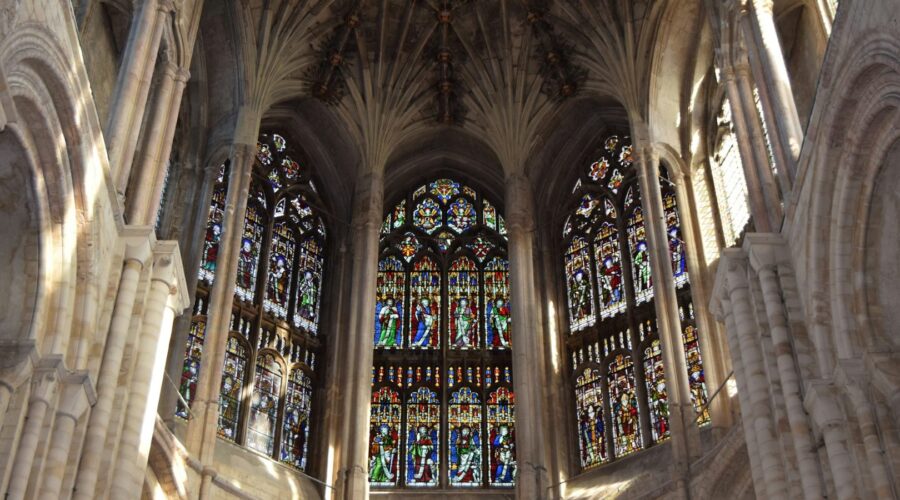
Explore the Inspiring World of Calvary Christian Church: A Comprehensive Guide
In the realm of Christianity, Calvary Christian Church stands as a beacon of faith, serving as a spiritual refuge for countless individuals. This comprehensive guide aims to delve into the intricacies of Calvary Christian Church, shedding light on its history, beliefs, practices, and community involvement. Whether you are a curious seeker, a potential member, or simply seeking to broaden your religious horizons, this in-depth exploration will illuminate the essence of this vibrant church.
Historical Foundation and Beliefs
Calvary Christian Church traces its roots back to the early 20th century, established upon the principles of evangelical Christianity. Its foundational beliefs align with the core tenants of Christianity, including the deity of Jesus Christ, the Trinity, the authority of the Bible, and the importance of evangelism. Calvary Christian Church emphasizes the transforming power of faith, encouraging members to live out their Christian values in all aspects of their lives.
Core Values and Mission
The church’s core values serve as guiding principles for its members and shape the overall ethos of the community. These values include:
- Worship: Glorifying God through heartfelt worship and reverence.
- Discipleship: Equipping believers to grow spiritually and live out their faith.
- Evangelism: Sharing the Gospel with others and inviting them to experience God’s love.
- Fellowship: Fostering a sense of community and belonging among members.
- Service: Ministering to those in need and making a positive impact on the world.
Vibrant Worship and Spiritual Growth
Calvary Christian Church is renowned for its vibrant and engaging worship services. Music plays a central role, with contemporary and traditional hymns, as well as dynamic performances by the church’s worship team. The sermons are biblically based and delivered with passion, aiming to inspire and challenge attendees to grow in their faith.
Discipleship and Bible Study
The church offers various discipleship opportunities to equip members on their spiritual journeys. Small group studies, Sunday school classes, and Bible study groups provide a nurturing environment for members to delve deeper into God’s Word, ask questions, and engage in meaningful discussions.
Community Outreach and Service
Beyond its walls, Calvary Christian Church actively engages in community outreach and service. Members participate in various initiatives to make a tangible difference in their local community and beyond. From food distribution and homeless support to mentoring programs and disaster relief efforts, the church demonstrates its commitment to serving those in need.
Local and Global Impact
The church’s outreach extends beyond local borders, with ongoing support for missionaries and charitable organizations worldwide. Calvary Christian Church believes in partnering with like-minded groups and individuals to address global issues such as poverty, disease, and social injustice.
Leadership and Governance
Calvary Christian Church is led by a team of pastors and elders who provide spiritual guidance, administrative oversight, and visionary leadership. The church adheres to a congregational polity, where major decisions are made through the participation and consensus of its members.
Organizational Structure
The church has a well-established organizational structure to facilitate efficient operations and ministry effectiveness. Various committees and ministries focus on specific areas, such as worship, youth programs, missions, and community outreach.
Youth and Family Ministries
Calvary Christian Church places great emphasis on nurturing the spiritual growth of children and youth. Comprehensive youth programs cater to different age groups, providing age-appropriate activities, mentorship opportunities, and faith-based education.
Family-Friendly Environment
The church recognizes the importance of family and strives to create a welcoming and supportive environment for families of all ages. Sunday School classes, family events, and parenting resources are designed to support parents in their role as spiritual mentors to their children.
Membership and Involvement
Becoming a member of Calvary Christian Church is a meaningful step that reflects a deep commitment to the faith community. Members enjoy the full benefits of the church, including participation in leadership roles, voting rights, and access to exclusive events and resources.
How to Get Involved
Interested individuals are encouraged to attend services, explore the church’s website, and engage with the staff or members to learn more about membership and opportunities for involvement. Calvary Christian Church welcomes all those who desire to grow in their faith and serve alongside a vibrant and welcoming community.
Conclusion
Calvary Christian Church stands as a beacon of hope and faith, offering a transformative spiritual experience to its members and serving as a beacon of hope and inspiration in its community. Through its vibrant worship, engaging discipleship programs, and unwavering commitment to service, the church empowers individuals to live out their Christian faith and make a meaningful impact on the world. Whether you are a seeker, a devoted Christian, or simply curious about the power of community, Calvary Christian Church invites you to explore the depths of its spiritual journey.

Unveiling the Apostolic Church: A Comprehensive Guide to Its History, Beliefs, and Practices
“`html
The Apostolic Church, also known as the Early Church, holds a significant place in Christian history. It encompasses the period from the life and ministry of Jesus Christ to the end of the first century. This era laid the foundation for the doctrines, practices, and beliefs that would shape Christianity for centuries to come. In this comprehensive guide, we will delve into the apostolic church, exploring its history, beliefs, and practices to gain a deeper understanding of its origins and impact.
Historical Context
The apostolic church emerged in the context of the Roman Empire during the first century AD. Palestine, a province of the Roman Empire, was the birthplace of Christianity. The early church faced persecution and opposition from both Jewish and Roman authorities. Despite these challenges, it experienced rapid growth and spread throughout the Roman Empire.
Key Events
- The life and ministry of Jesus Christ (c. 4 BC – 30 AD)
- The Pentecost (Acts 2): The descent of the Holy Spirit upon the disciples
- The martyrdom of Stephen (Acts 7): The first Christian martyr
- The conversion of Saul (Paul) to Christianity (Acts 9)
- The Council of Jerusalem (Acts 15): A gathering of church leaders to address the issue of Gentile inclusion
- The imprisonment and death of the apostles Peter and Paul in Rome
Beliefs
The apostolic church adhered to a core set of beliefs that formed the foundation of Christian doctrine. These beliefs were based on the teachings of Jesus Christ and the writings of the apostles.
Core Beliefs
- Monotheism: Belief in one God, the Creator of all.
- Trinity: Belief in God as Father, Son (Jesus Christ), and Holy Spirit.
- Jesus Christ: Belief in Jesus as the Son of God, the Messiah, who died for the sins of humanity.
- Resurrection: Belief in Jesus’ resurrection from the dead and His ascension into heaven.
- Salvation: Belief that salvation is a gift of God through faith in Jesus Christ.
Practices
The apostolic church engaged in various practices that expressed their beliefs and deepened their faith. These practices included:
Worship
- Gathering for worship on the first day of the week
- Participating in prayer, singing, and the reading of Scripture
- Celebrating the Lord’s Supper (also known as Communion)
Community
- Fellowship and sharing among believers
- Mutual support and care
- Baptism as a sign of faith and new life in Christ
Mission
- Witnessing to the Gospel of Jesus Christ
- Making disciples and spreading the Christian faith
- Planting new churches and establishing Christian communities
Challenges and Controversies
The apostolic church faced numerous challenges and controversies during its early years. These included:
Persecution
- Opposition and persecution from Jewish authorities
- Hostility and discrimination from Roman authorities
Internal Disputes
- The circumcision controversy (whether Gentile converts needed to be circumcised)
- Conflicts between Jewish and Gentile Christians
Heresies
- Gnosticism (a dualistic philosophical movement that taught salvation through knowledge)
- Docetism (a belief that Jesus only appeared to be human)
Legacy
The apostolic church laid the foundation for the Christian faith and played a pivotal role in shaping its history. Its beliefs, practices, and legacy continue to influence Christianity today. The writings of the apostles and early church leaders form the New Testament, which is an essential part of the Christian canon.
The apostolic church serves as a reminder of the origins of Christianity and the principles that guided the early followers of Jesus Christ. Its example of faithfulness, perseverance, and mission continues to inspire and challenge Christians today.
Key Figures in the Apostolic Church Name Role Peter Apostle, known as the “Rock” Paul Apostle to the Gentiles, author of many New Testament letters John Apostle, author of the Gospel of John and the book of Revelation James Brother of Jesus, leader of the Jerusalem church Mary Magdalene Disciple of Jesus, present at His crucifixion and resurrection Additional Resources:
“`
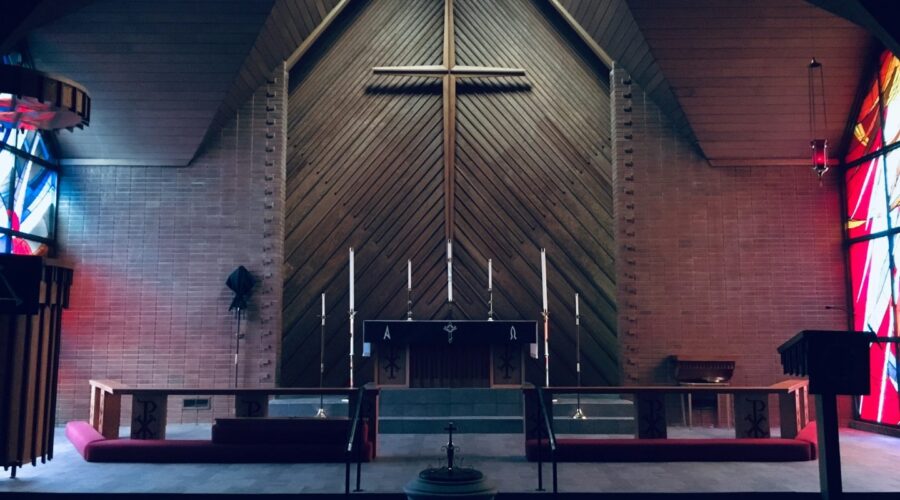
Cornerstone Baptist Church: A Beacon of Faith and Fellowship
Cornerstone Baptist Church stands as a pillar of faith and community in the heart of the city. Its enduring presence and commitment to serving its congregation and the wider community make it a beacon of spiritual enlightenment and social impact.
A Rich History of Service
Cornerstone Baptist Church has a long and illustrious history, dating back to the early 19th century. Founded by a group of devout Baptists, the church has played a pivotal role in shaping the spiritual and cultural landscape of the region.
- 1810: The church is established.
- 1845: The first church building is constructed.
- 1898: A new sanctuary is built to accommodate a growing congregation.
- 1960s: The church undergoes a period of significant expansion, adding Sunday School classrooms and community outreach programs.
Vibrant Worship Services
Cornerstone Baptist Church holds vibrant and uplifting worship services that cater to individuals of all ages and backgrounds.
Traditional Worship
The traditional worship service is a time-honored tradition that combines hymns, prayers, and Bible readings. It is a solemn and reverent experience that fosters a deep connection with the divine.
Contemporary Worship
The contemporary worship service offers a more modern approach, featuring praise music, multimedia presentations, and interactive sermons. It is a lively and engaging experience that resonates with a younger generation.
Engaging Ministries
Cornerstone Baptist Church offers a wide range of ministries that cater to the diverse needs of its congregation and the surrounding community.
Sunday School
Sunday School classes are held for children, youth, and adults. They provide opportunities for spiritual growth, Bible study, and community building.
Missionaries
The church supports several missionaries who serve in various parts of the world, sharing the Gospel and providing humanitarian aid.
Community Outreach
Cornerstone Baptist Church actively participates in community outreach programs, including food pantries, homeless shelters, and prison ministries.
Dedicated Pastors
Cornerstone Baptist Church has been blessed with a succession of dedicated pastors who have guided the congregation with wisdom and compassion.
Pastor Tenure Rev. John Smith 1810-1845 Rev. William Jones 1845-1880 Rev. Dr. Mary Brown 1990-present A Welcoming and Inclusive Community
Cornerstone Baptist Church values diversity and inclusivity. It is a place where individuals of all backgrounds, orientations, and ethnicities are welcomed and celebrated.
The church actively works to create a safe and supportive environment for its members. It offers programs and events that foster a sense of community and belonging.
How to Get Involved
If you are interested in learning more about Cornerstone Baptist Church or becoming a member, here are some ways to get involved:
- Visit the official church website.
- Call the church office at (555) 123-4567.
- Attend a Sunday worship service.
Conclusion
Cornerstone Baptist Church is a vibrant and dynamic congregation that is deeply committed to its faith and to serving the community. Its rich history, engaging worship services, and dedicated ministries make it a beacon of hope and inspiration for individuals seeking spiritual growth and fellowship.

First Communion: A Comprehensive Guide
“First Communion is a special occasion in the life of a young Catholic. It is a time to celebrate their spiritual growth and their commitment to the Church.” What is First Communion?
First Communion is a sacrament of the Catholic Church in which a baptized Catholic receives the Eucharist for the first time. The Eucharist is the bread and wine that have been consecrated by a priest and are believed to be the body and blood of Jesus Christ.
First Communion is usually celebrated when a child is between the ages of 7 and 10. However, the age at which a child receives First Communion can vary depending on the child’s maturity and the guidelines of their particular parish.
Preparation for First Communion
Preparation for First Communion typically begins several months before the ceremony. During this time, children will learn about the Eucharist and its significance, as well as the other sacraments of the Catholic Church.
Children will also participate in regular Mass attendance and may be required to attend special classes or retreats. These activities are designed to help children understand the importance of First Communion and to prepare them for the sacrament.
The First Communion Ceremony
The First Communion ceremony is usually held during Mass. The ceremony begins with a reading from the Bible, followed by a homily from the priest. The children then approach the altar and receive the Eucharist from the priest.
After receiving the Eucharist, the children are usually given a special blessing by the priest. The ceremony then concludes with a final prayer and a dismissal.
After First Communion
After receiving First Communion, children are expected to continue to participate in the life of the Church. They should attend Mass regularly and receive the Eucharist frequently.
Children who have received First Communion are also encouraged to participate in other sacraments, such as Confirmation and Penance. These sacraments help children to grow in their faith and to become fully participating members of the Catholic Church.
Tips for Parents
Here are a few tips for parents whose children are preparing for First Communion:
-
Talk to your child about the Eucharist and its significance.
-
Help your child to prepare for First Communion by attending Mass regularly and participating in other parish activities.
- Make sure your child understands the importance of First Communion and that it is a special occasion in their life.
-
Be patient with your child and answer any questions they may have about First Communion.
-
Celebrate your child’s First Communion with a special meal or activity.
Conclusion
First Communion is a significant milestone in the life of a young Catholic. It is a time to celebrate their spiritual growth and their commitment to the Church. With proper preparation and support, children can have a meaningful and memorable First Communion experience.
-

Explore the Historic Sanctuary: A Comprehensive Guide to the Church of the Holy Sepulchre
Introduction
Nestled in the heart of Jerusalem, the Church of the Holy Sepulchre stands as a testament to Christianity’s most sacred beliefs. For centuries, pilgrims from around the globe have journeyed to this ancient site, believed to be the site of Jesus Christ’s crucifixion and resurrection. With its impressive architectural marvels and historical significance, the Church of the Holy Sepulchre is an unmissable destination for pilgrims and history enthusiasts alike.
Historical Significance
The Crucifixion and Resurrection
According to Christian tradition, the Church of the Holy Sepulchre marks the sites of Jesus’ crucifixion at Golgotha and his entombment within a nearby cave. The Gospels of Matthew, Mark, Luke, and John describe Jesus’ final moments on Calvary, where he was crucified between two thieves and died on the cross. The Gospels also recount that his body was laid to rest in a tomb that was later discovered empty, marking his miraculous resurrection.
Early Christian History
In the 4th century, the Roman Emperor Constantine I ordered the construction of the first church on the site, known as the Basilica of the Holy Sepulchre. This magnificent structure was completed in 335 AD and became a major pilgrimage site for Christians throughout the Byzantine Empire. Over the centuries, the church was damaged and rebuilt several times, including after the Muslim conquest of Jerusalem in the 7th century.
Architectural Marvels
Rotunda and Aedicule
The centerpiece of the Church of the Holy Sepulchre is the Rotunda, a circular hall topped by a dome. At its center stands the Aedicule, a small shrine that marks the traditional site of Jesus’ tomb. The Aedicule is covered in marble and adorned with intricate carvings. Pilgrims often queue to enter the Aedicule and touch the stone slab said to have been Christ’s burial site.
Stone of Anointing
Near the entrance to the church lies the Stone of Anointing, a large marble slab where it is believed Jesus’ body was prepared for burial. Pilgrims often stop to pray and anoint themselves with oil at this sacred spot.
Calvary Chapel and Golgotha
Located on the upper level of the church, Calvary Chapel marks the traditional site of Jesus’ crucifixion. A silver-domed altar marks the spot where the cross is believed to have stood. Adjoining Calvary Chapel is the Golgotha Chapel, where the rock of Golgotha, said to be part of Jesus’ crucifixion site, is venerated.
Denominational Ownership and Shared Custody
The Church of the Holy Sepulchre is jointly administered by six Christian denominations: the Greek Orthodox, Armenian Apostolic, Roman Catholic, Syrian Orthodox, Ethiopian Orthodox, and Coptic Orthodox Churches. Each denomination has its own space within the church and conducts its own liturgies. This unique arrangement has often led to tensions and disputes among the denominations, but it has also ensured that the church has remained a center of Christian pilgrimage for centuries.
Pilgrimage and Significance
The Church of the Holy Sepulchre remains a primary destination for Christian pilgrims from around the world. Pilgrims often travel to the site to experience the sacred space where Jesus is believed to have died and risen. They pray, meditate, and walk the Via Dolorosa, the path that Jesus is said to have walked from his trial to his crucifixion.
Significance to Christians
For Christians, the Church of the Holy Sepulchre is more than just a historical site. It represents the central tenets of their faith: the suffering, death, and resurrection of Jesus Christ. The church serves as a reminder of the ultimate triumph of good over evil and the promise of eternal life for those who believe.
Practical Information
Visiting the Church
The Church of the Holy Sepulchre is open to visitors daily from sunrise to sunset. Visitors are advised to dress respectfully and be prepared for security checks. Guided tours are available for those who wish to learn more about the church’s history and significance.
Accommodation and Nearby Attractions
Jerusalem offers a wide range of accommodation options for visitors. Many hotels are located within easy walking distance of the Church of the Holy Sepulchre. The Old City of Jerusalem, where the church is situated, is also home to numerous other historical and religious sites, including the Western Wall, the Dome of the Rock, and the Al-Aqsa Mosque.
Conclusion
The Church of the Holy Sepulchre is a living testament to the historical and spiritual significance of Christianity. Its architectural marvels, historical importance, and shared custody by multiple denominations make it a unique and unforgettable destination. Whether you are a pilgrim seeking spiritual enrichment or a history enthusiast marveling at its ancient walls, the Church of the Holy Sepulchre is a place that will leave an everlasting impression.
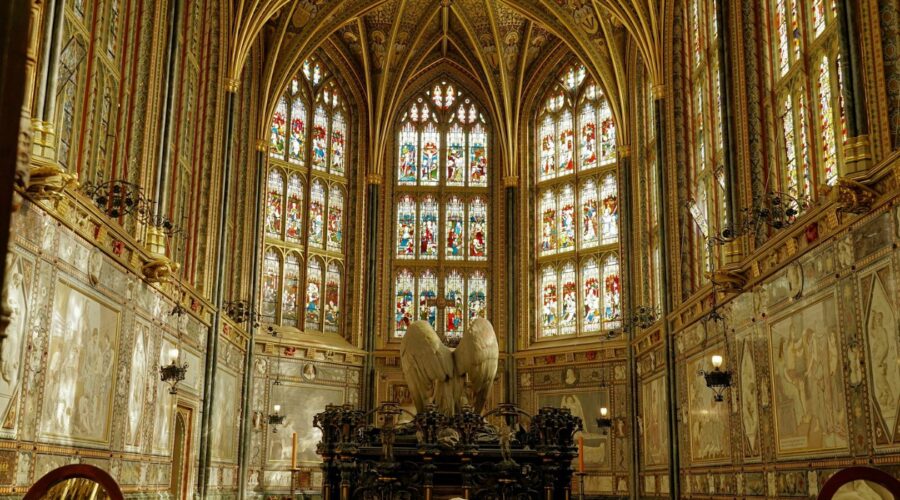
Catholic Daily Readings 2022: A Comprehensive Guide
Introduction
The Catholic Church’s daily readings are an essential part of the liturgical life of the faithful. They provide a daily encounter with the Word of God and guide us in our spiritual journey. In this comprehensive guide, we will explore the Catholic daily readings for 2022, providing detailed information, insights, and tips.
The Importance of Daily Readings
The daily readings serve several vital purposes:
- Encountering God: Through the readings, we encounter the living Word of God, who speaks to us through the pages of Scripture.
- Understanding the Faith: The readings provide insights into the core beliefs and teachings of the Catholic faith.
- Moral Guidance: The readings offer moral guidance and inspiration, helping us to live a life in accordance with God’s will.
- Spiritual Growth: Daily reading and reflection on the Word of God nourishes our spiritual growth and deepens our relationship with God.
The Liturgical Year
The Catholic liturgical year is divided into seasons, each with its own themes and readings:
- Advent: A season of preparation for the birth of Jesus (November 27 – December 24)
- Christmas: A season celebrating the birth of Jesus (December 25 – Epiphany)
- Lent: A season of penance and preparation for Easter (Ash Wednesday – Holy Saturday)
- Easter: A season celebrating the resurrection of Jesus (Easter Sunday – Pentecost)
- Ordinary Time: Two periods during the year not associated with a particular season (January 1 – Ash Wednesday, Pentecost – November 26)
Daily Reading Schedule
The daily readings are divided into three parts:
- First Reading: Typically from the Old Testament or Acts of the Apostles
- Psalm: A response to the First Reading
- Gospel: An account of Jesus’ life, teachings, or actions
The readings for each day of the year are listed in the Catholic Lectionary, which is used by priests and deacons during Mass.
Finding the Daily Readings
- Universalis: The online lectionary of the Catholic Church
- USCCB Daily Reading Archive
- Many Catholic apps and websites, such as Laudate or the Catholic Daily Readings App
Tips for Reading the Daily Readings
- Consistency: Make daily reading a part of your routine and set aside a specific time for it.
- Prayer: Begin and end your reading with a prayer, asking for God’s guidance and understanding.
- Context: Place the readings in the context of the liturgical season and the overall story of salvation.
- Reflection: Take time to reflect on the readings and how they relate to your life and faith journey.
- Journaling: Consider keeping a journal to record your reflections and insights.
Conclusion
The Catholic daily readings are a precious gift that nourishes our faith and guides us on our spiritual journey. By engaging with them daily, we deepen our relationship with God, strengthen our understanding of the Catholic faith, and live more Christ-like lives. May this comprehensive guide empower you to make the most of the daily readings and encounter the transformative power of God’s Word.
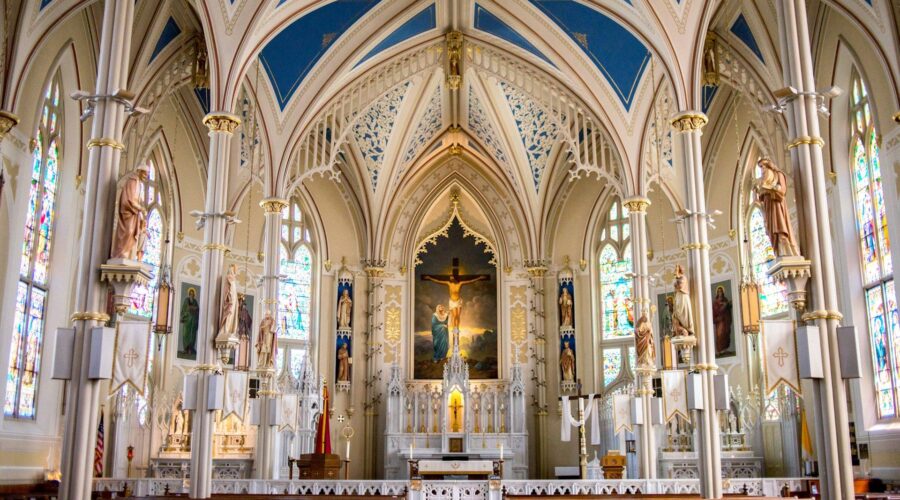
Elevate Your Spirit with Sunday Morning Prayer: A Comprehensive Guide
Introduction
Sunday mornings hold a special significance in the lives of many, offering a serene and reflective time to connect with the divine. Prayer is a cornerstone of this sacred day, providing an opportunity to express gratitude, seek guidance, and renew our spiritual well-being.
This comprehensive guide will delve into the enriching world of Sunday morning prayer, offering insights into its benefits, structure, and transformative power. Whether you’re a seasoned practitioner or seeking to deepen your connection with the divine, this resource aims to inspire and empower your prayer journey.
Benefits of Sunday Morning Prayer
- Spiritual Renewal: Prayer fosters a profound connection with the divine, allowing us to replenish our spiritual reserves and reconnect with our purpose.
- Gratitude and Appreciation: Expressing gratitude through prayer cultivates a positive outlook and reinforces the abundance in our lives.
- Guidance and Clarity: Prayer provides a space for seeking divine guidance and clarity in decision-making and life’s challenges.
- Stress Reduction and Inner Peace: Engaging in prayer can calm the mind, reduce stress, and promote inner peace by aligning our thoughts and emotions with a higher power.
- Community Connection: Prayer can be a collective experience, bringing individuals together in shared devotion and strengthening the bonds within a community.
Structure and Elements of Sunday Morning Prayer
Opening Invocation
Start by acknowledging the presence of the divine and expressing gratitude for the opportunity to pray. You can begin with a simple phrase, such as “Almighty God, we gather here in Your presence.”
Confession and Repentance
This is a time for acknowledging our shortcomings and expressing repentance for any wrongdoing. It’s an important step for spiritual growth and cleansing.
Thanksgiving and Praise
Express gratitude for the blessings in your life, both big and small. Focus on the positive aspects of your life and let your words be filled with heartfelt appreciation.
Supplication and Intercession
This involves making requests and asking for divine intervention in your life and the lives of others. Be specific and heartfelt in your petitions.
Prayer for Guidance and Direction
Seek divine guidance for decision-making, life’s challenges, and spiritual growth. Open yourself to receiving insights and wisdom.
Concluding Benediction
Close your prayer by expressing gratitude for the opportunity to connect with the divine and reaffirming your faith. You can use a simple phrase, such as “In Jesus’ name, we pray. Amen.”
Tips for Meaningful Sunday Morning Prayer
- Create a Dedicated Space: Find a quiet and comfortable place where you can focus and connect with the divine.
- Set Aside Time: Treat your Sunday morning prayer as a sacred appointment and allocate dedicated time for it.
- Be Present and Attentive: Fully immerse yourself in the experience and let go of distractions to connect deeply with your prayers.
- Listen for Divine Guidance: Prayer is a two-way communication. Listen for any thoughts, feelings, or insights that may arise during your prayer time.
- Use Prayer Resources: Consider using prayer books, devotional materials, or online resources to guide your prayers and expand your understanding.
- Pray with Others: Share the experience of prayer with loved ones, friends, or a faith community to enhance its communal and transformative power.
Examples of Sunday Morning Prayers
The following are examples of prayers that can be used as inspiration or adapted to suit your preferences:
Opening Invocation: “Gracious God, as we gather in Your presence on this sacred morning, we express our gratitude for the opportunity to connect with You. May our hearts be open to Your love and guidance.”
Thanksgiving and Praise: “We thank You, Lord, for the beauty of this day, the gift of life, and the countless blessings that surround us. We honor Your majesty and marvel at Your grace that sustains us.”
Supplication and Intercession: “We lift up to You, Heavenly Father, our personal burdens and the challenges we face. Guide us in our decision-making and grant us the strength to overcome adversity. We pray for healing, restoration, and peace in our lives and in the world.”
Prayer for Guidance and Direction: “Holy Spirit, we seek Your wisdom and guidance for our paths. Help us discern Your will and empower us to live in alignment with Your purpose. Grant us clarity and courage in our decisions and daily actions.”
Concluding Benediction: “In Your loving embrace, O Lord, we surrender ourselves to Your care. May Your peace and love fill our hearts and guide us throughout this week. In Jesus’ precious name, we pray. Amen.”
Conclusion
Sunday morning prayer is a profound and transformative practice that can enrich our lives and deepen our connection with the divine. By embracing its benefits, following its structure, incorporating meaningful elements, and applying practical tips, we can cultivate a prayer life that nourishes our souls and empowers us to navigate life’s complexities.
Remember, prayer is not a one-time event but an ongoing journey. As you consistently engage in Sunday morning prayer, you will discover its transformative power and experience the boundless love and guidance that flow from the divine. May your Sunday mornings be filled with the joy, peace, and renewal that come from connecting with the source of all creation.